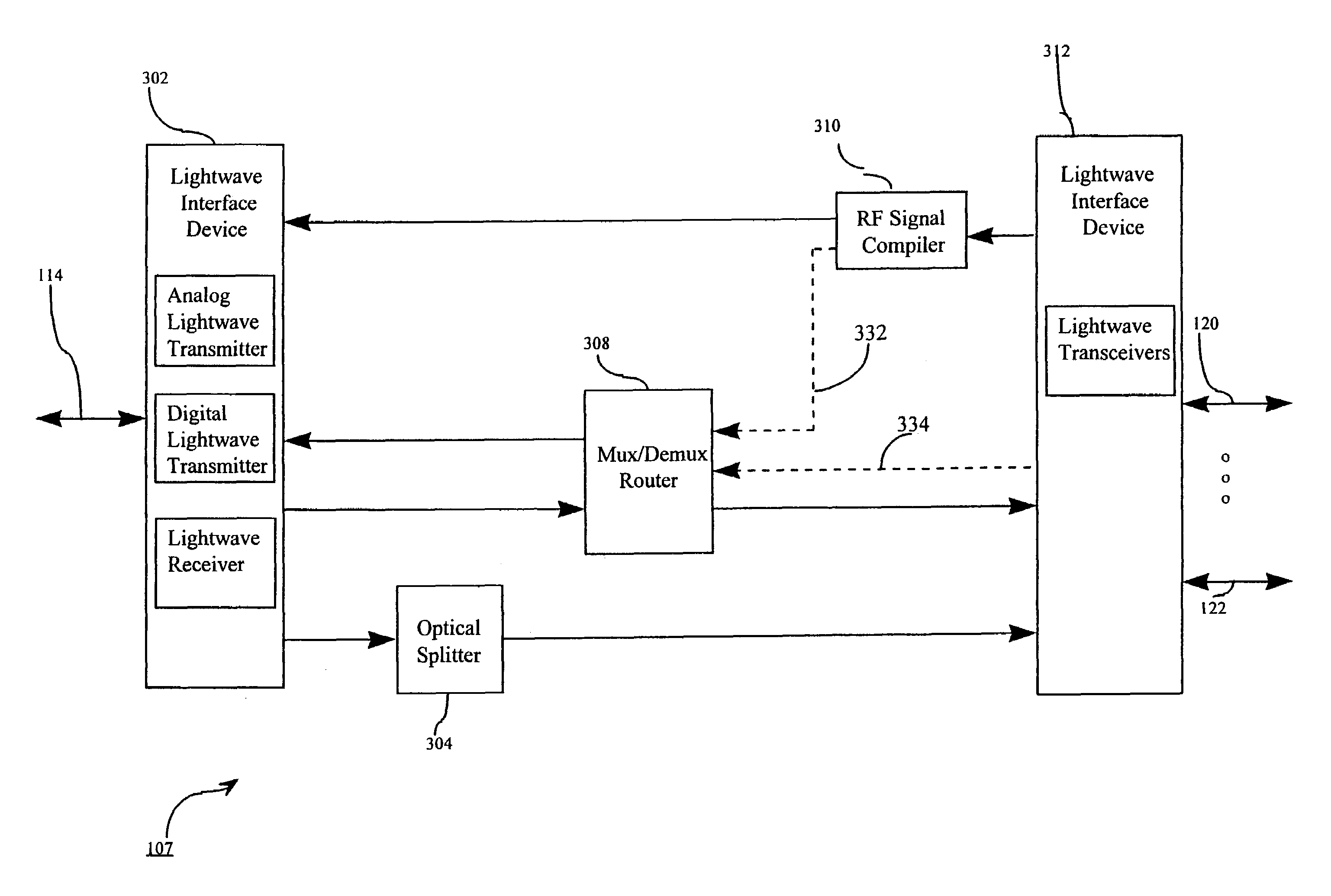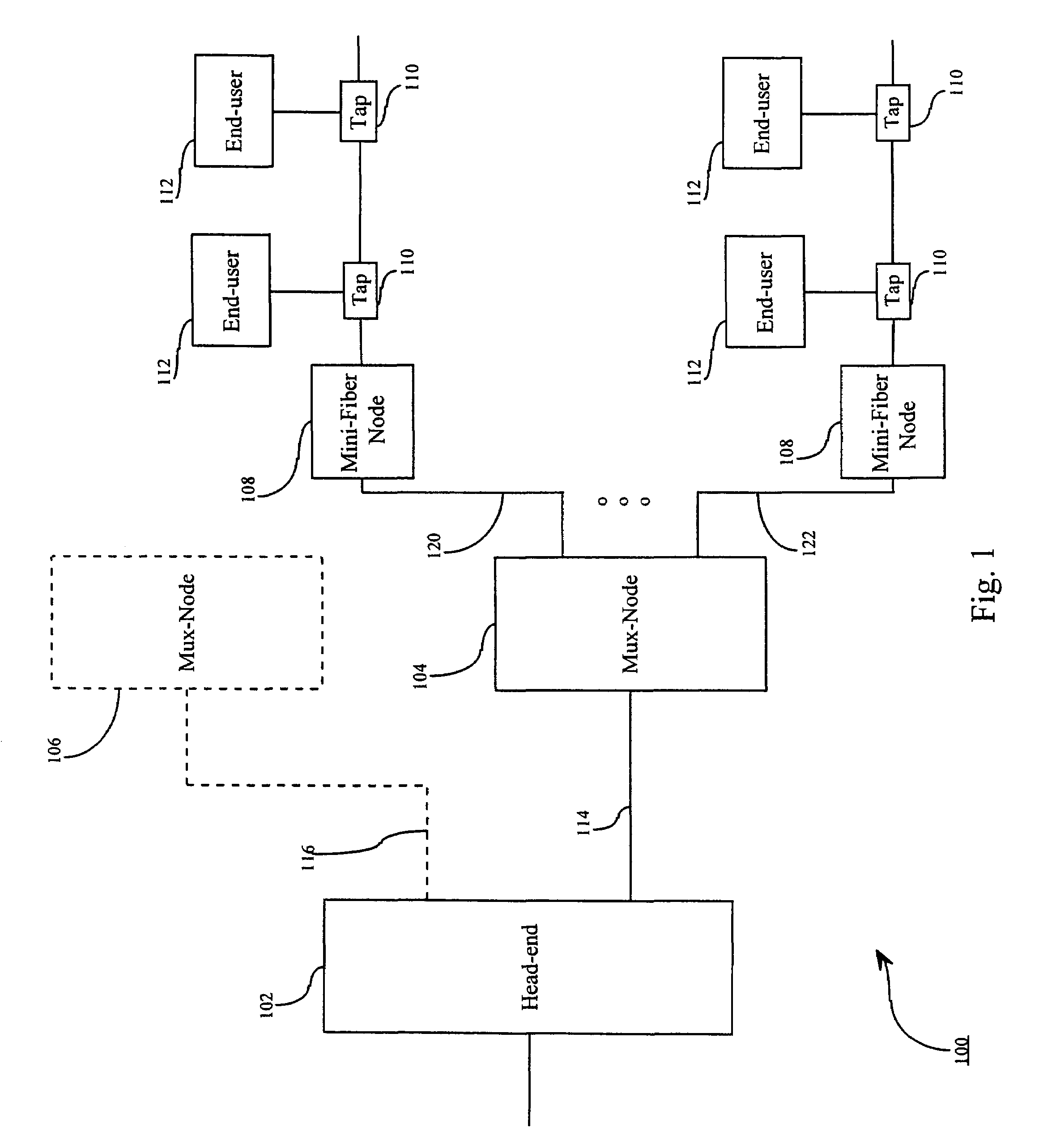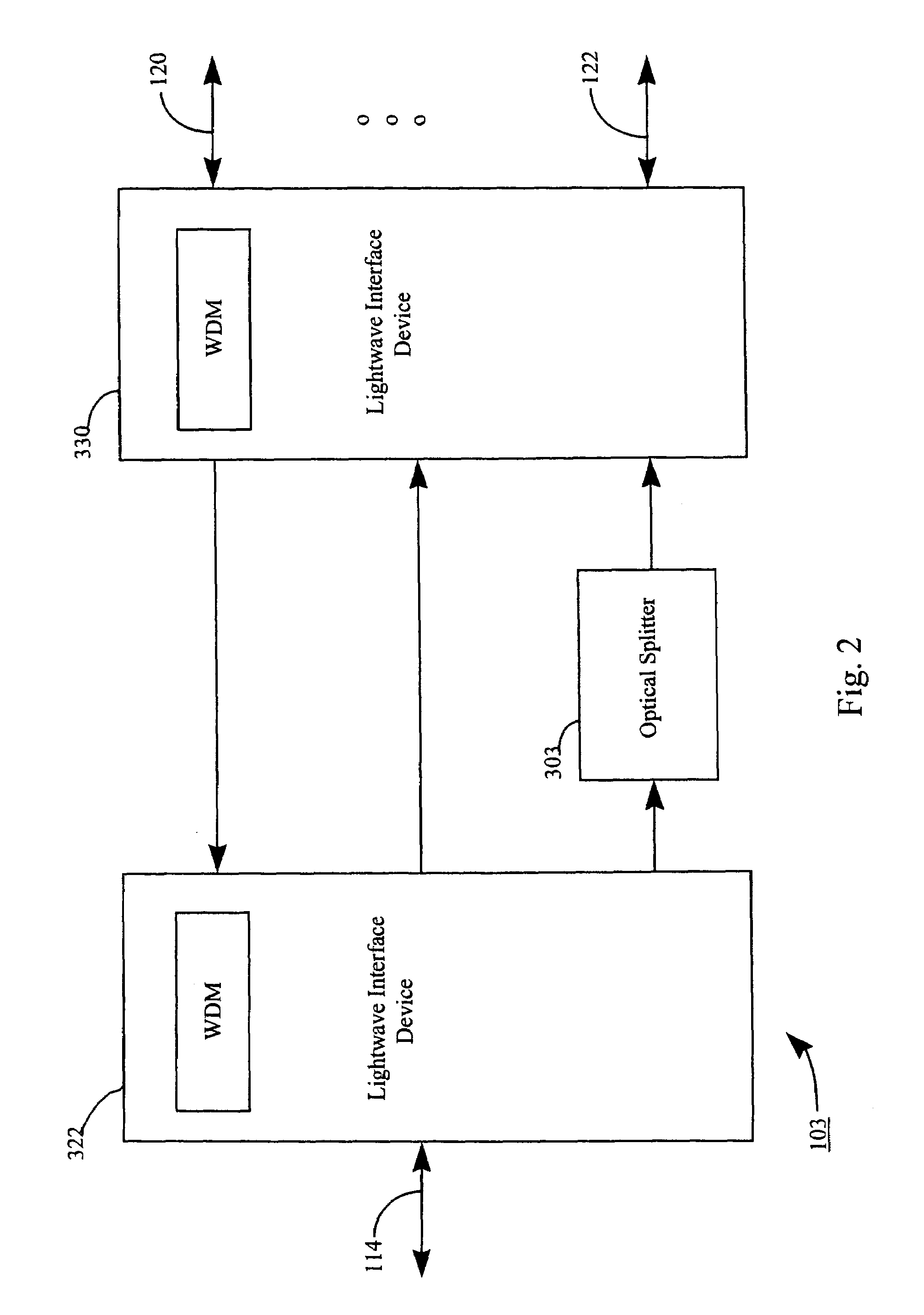Fiber and wire communication system
a communication system and fiber optic technology, applied in the field of communication systems, can solve problems such as stress on current systems to their limits, and achieve the effects of reducing communication traffic between the mux-node and the head-end, simplifying routing tasks, and increasing efficiency
- Summary
- Abstract
- Description
- Claims
- Application Information
AI Technical Summary
Benefits of technology
Problems solved by technology
Method used
Image
Examples
Embodiment Construction
[0024]FIG. 1 shows an exemplary block diagram of a communication system 100 that includes a head-end 102, mux-nodes 104–106, mini-fiber nodes (mFNs) 108 and end-users 112. The mux-nodes 104–106 are connected to the head-end 102 via one or more optical fiber trunks 114–116, the mFNs 108 are connected to the mux-node 104 via optical fiber trunks 120–122 and the end-users 112 are connected to the mFNs 108 via passive wired connections such as coaxial lines via taps 110. Each of the optical fiber trunks 114–116 and 120–122 may include one or more optical fibers.
[0025]The head-end 102 may include primary hubs and secondary hubs (not shown) that form interconnected regional service facilities. The primary hubs may include a source of broadcast information such as TV broadcast signals and may have overall control of the communication system 100. Communication among the end-users 112 serviced by different mux-nodes 104–106 may be provided via the primary hubs because end-users 112 are reach...
PUM
 Login to View More
Login to View More Abstract
Description
Claims
Application Information
 Login to View More
Login to View More - R&D
- Intellectual Property
- Life Sciences
- Materials
- Tech Scout
- Unparalleled Data Quality
- Higher Quality Content
- 60% Fewer Hallucinations
Browse by: Latest US Patents, China's latest patents, Technical Efficacy Thesaurus, Application Domain, Technology Topic, Popular Technical Reports.
© 2025 PatSnap. All rights reserved.Legal|Privacy policy|Modern Slavery Act Transparency Statement|Sitemap|About US| Contact US: help@patsnap.com



